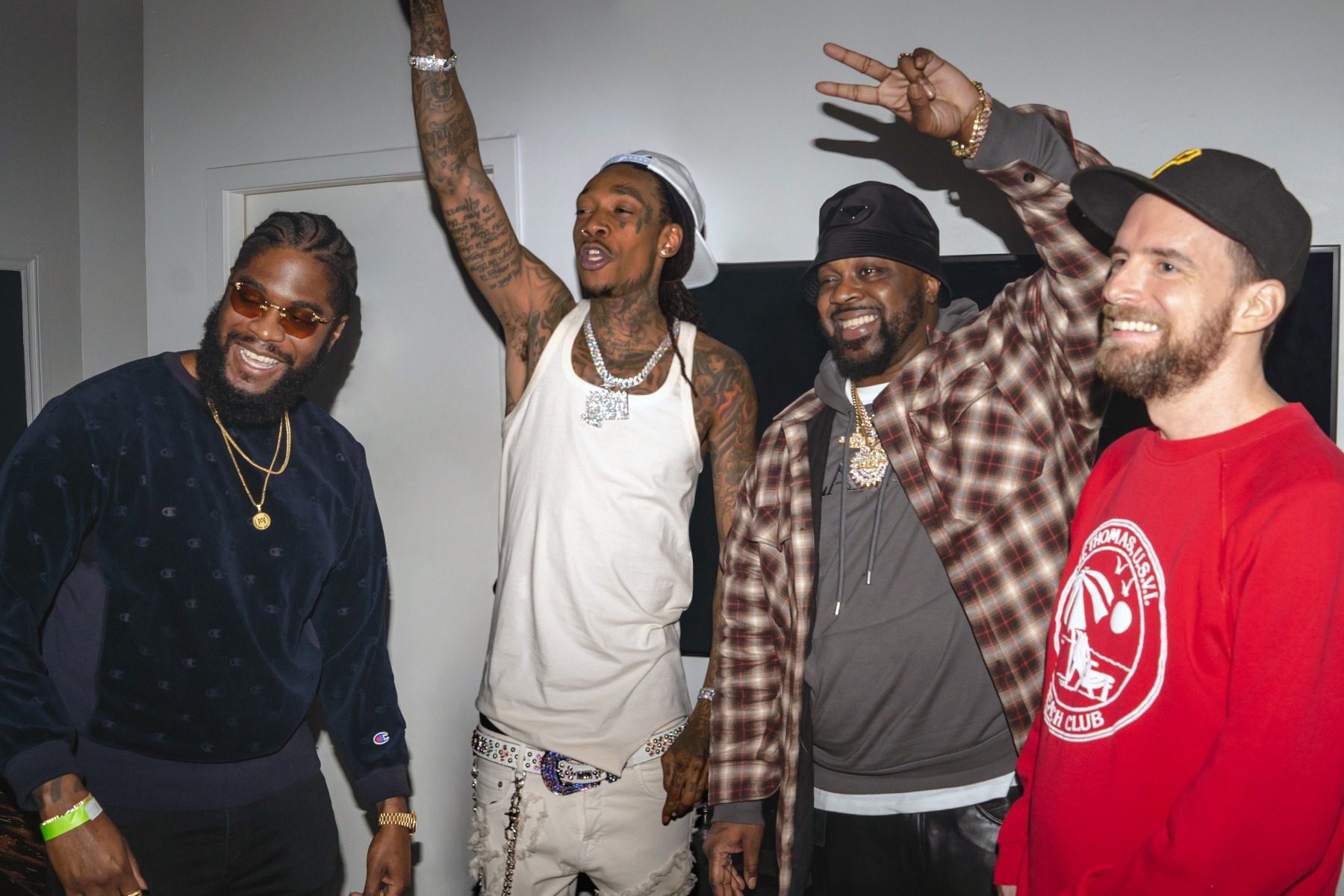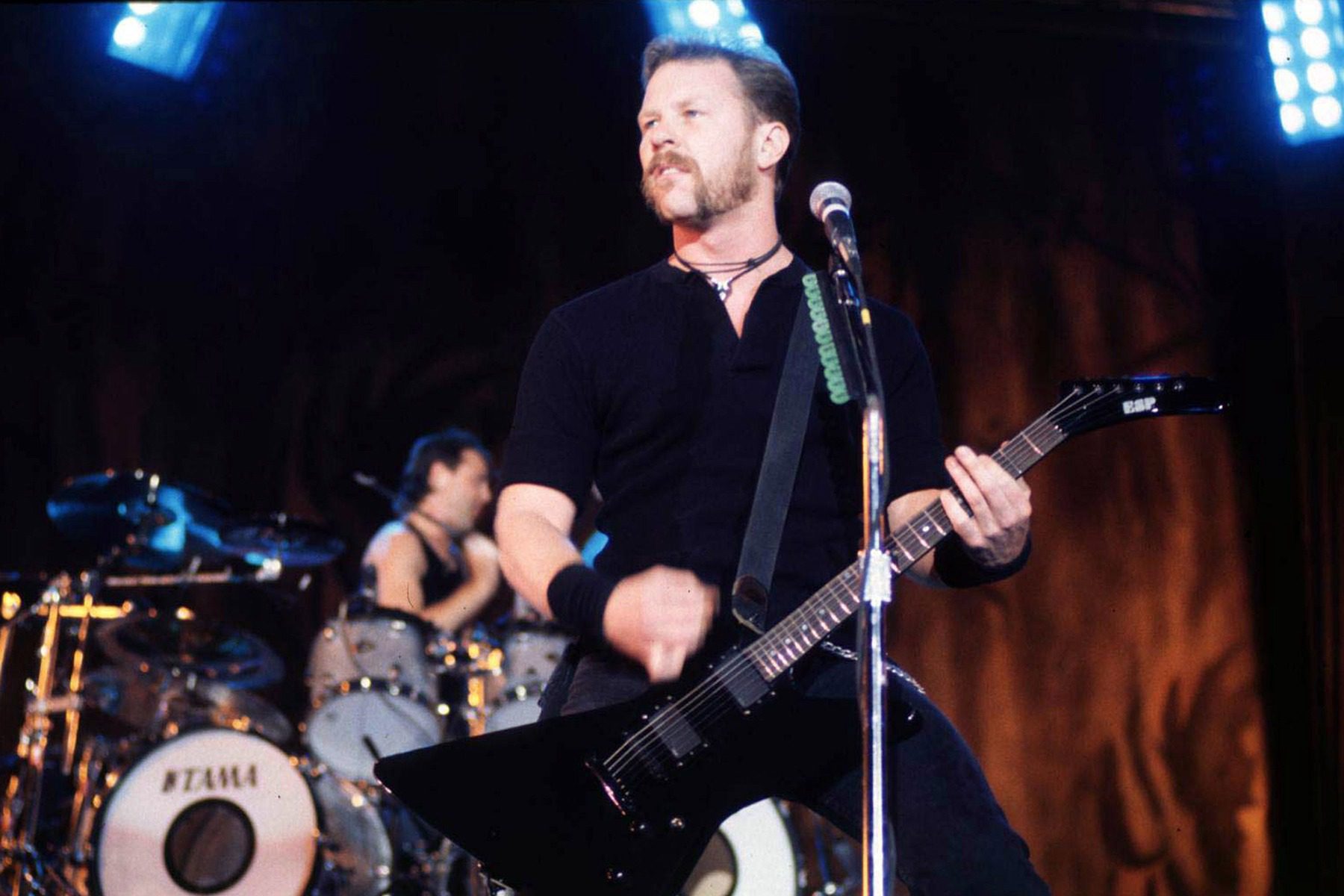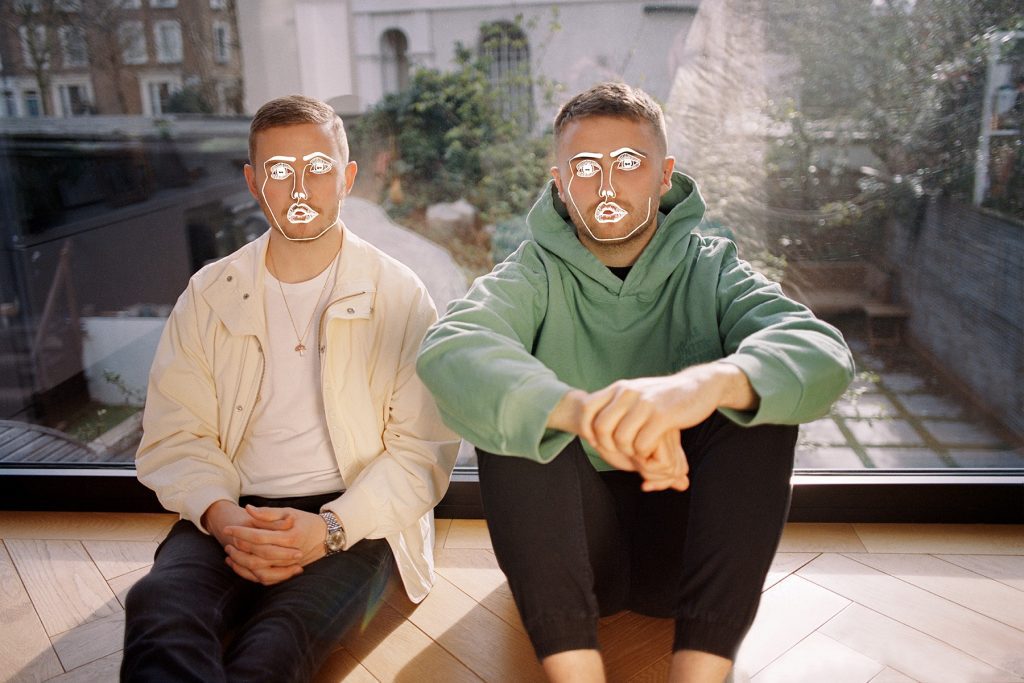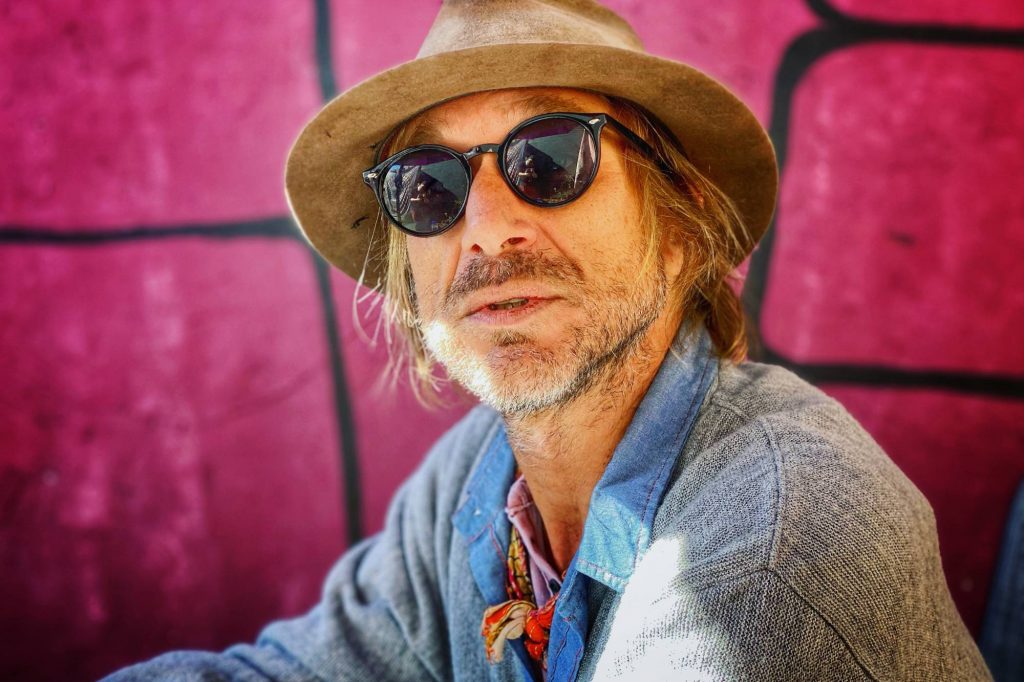
Mashup Maestro Girl Talk Is Back With a New Album — And This Time He Had to Clear His Samples
To finish his first album in 12 years, Girl Talk had to do something he’d never done before. Not just from a creative standpoint, though Full Court Press — a collaborative album with Wiz Khalifa, Smoke DZA, and Big K.R.I.T. out April 8 via Asylum/Taylor Gang — is a marked departure from the producer/DJ’s wildly popular mashup albums. No, the challenge Full Court Press presented was a hurdle that none of those years of mashups prepared him for: clearing samples.
“When we were done, I was thinking, I don’t even know if this can come out!” Girl Talk — real name Gregg Gillis — tells IndieLand. “Can anyone afford to put it out? I’m not used to dealing with actual labels with a sample clearance team, so it was educational going through that process.”
Between 2006 and 2010, Gillis carved out one of the most unique careers in music with Girl Talk, a project that embodied the promise of the internet’s infinite jukebox. Over three albums — 2006’s Night Ripper, 2008’s Feed the Animals, and 2010’s All Day — and during his famously rowdy live shows, Gillis detonated pop’s spacetime continuum in astoundingly clever ways. Drama’s 1999 Dirty South hit “Left, Right, Left” doing a call-and-response with Roy Orbison’s “You Got It”; the guitar riff of Stars’ “Hum” skronking beneath M.I.A.’s “Galang”; the list of examples goes on and on.
blogherads.adq.push(function () {
blogherads
.defineSlot( ‘medrec’, ‘gpt-mob-article-inbody1-uid0’ )
.setTargeting( ‘pos’, [“mid-article”,”mid”,”in-article1″,”mid-article1″] )
.setSubAdUnitPath(“music//article//inbody1”)
.addSize([[300,250],[2,2],[3,3],[300,461],[320,480],[2,4],[4,2],[300,400]])
;
});
(For those wondering, Girl Talk never cleared samples for his mashup albums, because he claimed the short snippets he used to essentially create a new work were protected under the “fair use” principle of copyright law. As to whether that argument would hold up, no one ever took him to court and most of his records are available on streaming services and YouTube.)
After All Day, Gillis stepped back from mashups, but not from music. He took on more “traditional” projects as a producer, dropping an EP with the Philadelphia MC Freeway in 2014, and making singles with Jim Jones, T-Pain, and Don Q. But the artists he clicked with most were Big K.R.I.T., Smoke DZA, and fellow Pittsburgh native Wiz Khalifa. After a handful of individual collaborations, he decided to try to get all three in the studio at the same time.
“Those guys collaborated early on in their careers, and they started from similar places, but then went to do their own things and have very different lanes,” Gillis says. “I thought it would be interesting if I could get them together and do something as a group. I didn’t think it would happen. But when I reached out, everyone was down.”
blogherads.adq.push(function () {
blogherads
.defineSlot( ‘medrec’, ‘gpt-mob-article-inbody2-uid1’ )
.setTargeting( ‘pos’, [“mid-article2″,”mid”,”in-article2″,”mid-article”] )
.setSubAdUnitPath(“music//article//inbody2”)
.addSize([[300,250],[300,251],[2,4],[4,2],[320,480],[3,3],[2,2]])
.setLazyLoadMultiplier(2)
;
});
The multi-day session took place right before the pandemic, and the very first beat Gillis played became Full Court Press‘ lead single, “Put You On.” That set the mood and tempo as Wiz, K.R.I.T., and DZA hopped on pretty much every beat he played. “I got to switch the mood up, like, ‘Now we’re going to do this, now we’re going to that,’” he says. “They were great sports about just letting it go. There was a certain camaraderie, it was a very fun, friendly vibe, and I think it comes off in the project.”
While Full Court Press is in many ways completely different from Gillis’ mashup albums, it’s also not so dissimilar. It’s a breezy 10-song set with three great MCs bouncing off each other, and Gillis’ production feels at once rooted in the warm tones of the Seventies and Eighties, with a few left turns for good measure. All that stems from his samples. There’s plenty of crate-digger gold, and Gillis even got Nile Rodgers to re-record the stems of Chic’s “Soup for One” for Wiz Khalifa’s solo offering, “Ready for Love.” But Gillis also found samples by contemporary artists like Toro Y Moi and Aldous RH that fit seamlessly alongside the dusty gems from Little Murray and the Mantics, Michael Henderson, and the Turkish artist Özdemir Erdoğan, whose 1977 tune “Aç Kapıyı Gir İçeri” appears on the quartet’s new single, “How the Story Goes.”
“Going back to my [older] albums or live shows, I never like to have two songs from the Eighties back-to-back, or two songs from the Seventies,” Gillis says. “I want it to feel unpredictable, and I wanted that on this album too. I didn’t want it to be too static in terms of the era of the samples or the feel.”
On top of prepping for the release of Full Court Press, Gillis is getting ready to embark on his first full-fledged tour in nine years — and, yes, his live set will feature some new mashups. Speaking with IndieLand, Gillis offers more insight into the making of Full Court Press, assures fans he’s always making new mashups and remixes, talks about the form’s unexpected revival on TikTok, and more.
Why do you think you meshed so well with Wiz, K.R.I.T., and DZA?
I’ve learned that the real art is meeting halfway, somewhere unique for both of you. With Wiz, K.R.I.T., and DZA, we tried out so much stuff, and I think it’s apparent on the album. There’s “Ready for Love” with Wiz, which is him doing an R&B song over a Chic sample. There’s more traditional rap stuff. It kind of jumps around. Each of them, individually, does a wide variety of things, so it was fun to try out as much as we could, then take all of that material, go home, and — kind of like I would do with a mashup album — really trim the fat and figure out what’s working together. It did feel like putting together one of my previous albums: There are all these pieces, there’s three very distinct artists, it has an unpredictable feel, but it’s still cohesive.
What was it like with all four of you in the studio?
I don’t know when was the last time they all saw each other, but there was a very fun, hang-out energy — just a good time in the studio. Usually when I’m with people in the studio, I might play five to 10 beats, and they might want to hear a few different things, and then pick one. With the three of them, since they had to collectively decide, they just got on whatever I played. And sometimes when you’re with one artist, they might take their time writing, but everyone was on their A game. It was like, “OK, who’s going to finish first? Who’s going to get in there?”
blogherads.adq.push(function () {
blogherads
.defineSlot( ‘medrec’, ‘gpt-mob-article-inbodyX-uid2’ )
.setTargeting( ‘pos’, [“mid”,”mid-articleX”,”in-articleX”,”mid-article”] )
.setSubAdUnitPath(“music//article//inbodyX”)
.addSize([[300,250],[300,251],[3,3],[2,2]])
.setLazyLoadMultiplier(2)
;
});
What are some of your favorite samples on the album?
The Chic one [“Ready for Love”], I feel, is the closest to traditional Girl Talk, because it’s more of a mashup thing. That one was interesting because I envisioned Wiz rapping on that. When he started singing, it was different than what I was hoping, but then I saw it taking shape — it’s amazing watching him work, because he knows how to produce his vocals. Like the hook for that, he immediately laid down multiple parts and he knew where to pan things, using different harmonies and layers — he did that all himself. That’s the point, and the fun, of doing collaborations: People force you out of the way you envisioned it.
Another standout track is “Everyday,” with Curren$y. I love the sample on that [Michael Henderson’s “Come To Me”]. It has such a nostalgic, all-encompassing feel. When I’m around the house playing music and just hanging out, that’s the sort of stuff I’m always playing — that Seventies, Eighties, mellow R&B that still has a certain triumphant feel to it.
Nile Rodgers recreated the Chic sample, “Soup for One” — how’d that come about?
There was a sample clearance issue, and we thought we wouldn’t be able to do it. That would’ve been a huge letdown, because that song was integral in terms of how the sample relates to the others on the album. But at the same time, that song was so different from everything else. So Nile Rodgers agreed to replay it so we could get the clearance. As someone who’s been doing sample-based music my whole life, I didn’t even necessarily want the replay initially, because I just love the way the original sounds. It’s perfect. So I was concerned about the way it would turn out, and we relayed that to Nile, and he absolutely nailed it. Plus, I also got the stems so I could be more hands on with it. The song ended up sounding so much better, and I’m really happy we got the replay.
Clearing samples must’ve been a new experience.
Yeah [laughs]. Nine out of ten songs have samples, and the song that doesn’t, “Ain’t No Fun,” we had to clear because the vocals are an interpolation of a Snoop Dogg song [also called “Ain’t No Fun”]. So when we were done I was thinking, I don’t even know if this can come out! But that was a big part of it, and what gives the album a unique sound. There are a lot of projects with a few samples on them nowadays, but this is top to bottom. When you’re dealing with samples, there’s such a unique characteristic to each song because there’s a special story about each one — how they were recorded, where they’re from, what era they’re from. All of that gives it a colorful feel.
An album like this is obviously different from your past work, but how did that play out from a creative standpoint?
This goes back to something I’ve learned over the years: I have a natural tendency to think I should have beat switches on songs, or I should change things up. But sometimes when you’re in the studio and it sounds good, that’s the best version. And that’s something I’ve learned from working with other artists. My process at home is very trial and error, calculated, meticulous tinkering. But with most of the artists in the studio — and definitely with these sessions — they’re capturing a moment and that’s what it is. Oftentimes they don’t want to go back and adjust it. If it’s not good, then we don’t use it. We’ll just make something else. That’s the opposite of the way I work [laughs]. I make something, it’s kind of good, and then I will mess with it for three months until it’s somewhere that I like.
blogherads.adq.push(function () {
blogherads
.defineSlot( ‘medrec’, ‘gpt-mob-article-inbodyX-uid3’ )
.setTargeting( ‘pos’, [“mid”,”mid-articleX”,”in-articleX”,”mid-article”] )
.setSubAdUnitPath(“music//article//inbodyX”)
.addSize([[300,250],[300,251],[3,3],[2,2]])
.setLazyLoadMultiplier(2)
;
});
Tell me about your shift away from mashups to more traditional producing work. Where was your head at creatively after All Day?
Even before I was done making All Day, I was like, ‘Maybe this will be the last one I do like this.’ Now it’s 12 years later and every day on Twitter, people ask when the next mashup album is coming. I can say I’m closer to that now than I was five years ago — but I’m not saying I’m close. I’ve never stopped making that material for shows, I enjoy making it, and preparing for this tour is a ton of work, but it’s also fun to go through the current crop of music and do stuff that I’m excited about.
The production work came about naturally. During that run of Night Ripper through All Day, people would always ask me, “Are you going to get into production now?” I think that was mainly because The Grey Album by Danger Mouse was such a touchstone, and he’s a famous producer on his own. I really wasn’t interested in doing production at that time. Mashups were my work. But after All Day, I wanted to expand. It was just about, what would be an interesting thing for me to do next? Just figuring out the next step that is challenging, fun, and not stagnant.
You had such a reputation for this one thing. Was it hard getting people to take you seriously as a producer?
Yeah, and I think the name “Girl Talk” doesn’t necessarily help — it’s a weird thing, like, what is that? I’ve gotten in the studio with people whose management had suggested me, and when they meet me, they’re like, “Oh, I thought you were going to have a crazy pink mohawk.” I still struggle with that.
blogherads.adq.push(function () {
blogherads
.defineSlot( ‘medrec’, ‘gpt-mob-article-inbodyX-uid4’ )
.setTargeting( ‘pos’, [“mid”,”mid-articleX”,”in-articleX”,”mid-article”] )
.setSubAdUnitPath(“music//article//inbodyX”)
.addSize([[300,250],[300,251],[3,3],[2,2]])
.setLazyLoadMultiplier(2)
;
});
With Wiz, K.R.I.T., and DZA, it’s a little different because I’ve known them for a while. Especially with Wiz being from Pittsburgh — we met in 2006 at a club, and I actually gave him a copy of Night Ripper on CD-R before it was out. There was a period from like 2008 to 2010 where we played some shows together, so we have this history. We would run into each other at the airport, see each other at festivals, and just stayed in contact. We’re not extremely close friends, but we’ve watched each other’s careers. Obviously, he went on to superstardom, but he was always cool and always down.
With other artists, I still feel like it’s kind of about getting the name out there. But that’s part of the fun. I’ve had a nontraditional career, I’ve never fit in anywhere. When I was doing more underground stuff early in my career, I didn’t fit in there. And then when the mashup stuff took off, most festivals I played, I felt like an oddball on those lineups. That’s just part of what’s built in here, and this is another step with that.
You mentioned Danger Mouse’s Grey Album, and I was thinking of other artists doing mashup stuff like you in the early 2000s, like Hollertronix, DJ Earworm, and the Hood Internet. Why was that time so ripe for this kind of experimentation?
It was the technology. I started doing Girl Talk in 2000, and that’s when Napster hit. You could download music and mess around with it. The software that was coming out — there was definitely music-making software prior to that — but it was becoming more widespread. There was a wave of laptop music, more experimental stuff like Kid 606 or Fennesz and Mego Records. I think a lot of people were dabbling with laptops, messing with music. At that time, it just felt like such a fun, genre-busting moment, because the walls were still up on genre. It seemed radical to blend these different things and make them exist under the same roof.
By the time All Day came out a decade later, did you feel like that moment had run its course?
It was like we won. The point was across. When I was touring around Night Ripper, I would play art galleries to 30 people, or dingy bars, doing, like, a Madonna remix. And at that time — it seems weird to say now — but some people would be mad about it, or confrontational. Some drunk bar where they’re waiting to see a band, and you’re up there doing weird remixes of pop music, someone might mess with you, unplug your computer, boo you. But between 2006 and 2010, it became fully accepted that people understood this now. It wasn’t like I had to move on, it was just like, the thing that we were fighting for is almost over at this moment. But obviously people continued doing work like that, and in recent years with TikTok it seems like mashups are born again. It did seem like they dipped down, and now for a younger generation they’re fresh again.
I’m glad you mentioned that, because I wanted to ask if you were on TikTok. Why do you think the platform is so ripe for this kind of style?
I don’t actively browse it, but my wife checks it out. I’m always hearing a weird mashup in the background and asking, “What’s that?” And this goes for rap production, too: Young people are amazing with innovation, with technology, and music. That’s always the way it is. I think the quick snippet idea of TikTok taps into the appeal that [mashups] always had to me — the decontextualization of something familiar. That’s something that goes back to some of my early love of rap music. Like hearing Jay-Z over a song from Annie on “Hard Knock Life” — it was crazy hearing them flip a sample like that. Taking something you know and putting it in a new light is always powerful. Things are coming a mile-a-minute now, so the quick nature, the technology, and the decontextualization that’s always at the heart of it… I feel that’s still why it hits now.
blogherads.adq.push(function () {
blogherads
.defineSlot( ‘medrec’, ‘gpt-mob-article-inbodyX-uid5’ )
.setTargeting( ‘pos’, [“mid”,”mid-articleX”,”in-articleX”,”mid-article”] )
.setSubAdUnitPath(“music//article//inbodyX”)
.addSize([[300,250],[300,251],[3,3],[2,2]])
.setLazyLoadMultiplier(2)
;
});
You’ve been doing some mashup work for your tour. You don’t have to give away any big surprises, but what’s it been like tinkering with more contemporary music?
I really like the Olivia Rodrigo album, the Dua Lipa album. Gayle’s “Abcdefu” is an incredible song. It is tough with a lot of current hip-hop, which I love, but it’s a lot of singing with Auto-Tune, and that makes remixing more difficult because it’s in a specific key and you have to match that key. Whereas a lot of rapping you can throw it on a variety of things. I love the current wave of female rap artists — Megan Thee Stallion, Saweetie, a lot of those are my favorite club songs. With the show I’m putting on now, it’s probably the most modern female-fronted rap music I’ve played. I’ve always loved the stuff I grew up on, like Missy Elliott and Lil Kim, but it’s cool just how many club bangers there are now with female rap artists.
What kind of future do you see for your mashups — mostly for the live show, or could there be another album? Where do you hope the production work will keep slotting in?
I just shared a remix of Olivia Rodrigo’s “Good 4 U” with Aphex Twin’s “Come to Daddy.” I really liked it, I posted it on Twitter, and got a good response. But things like that, I’m like, I don’t know if this is gonna work in the show [laughs]. So that’s why I shared it. That was a slightly big personal moment, because I knew it wasn’t going to be a big deal; I play the mashups live all the time, but I never share them online. I don’t want to have my own rules built up too much, but I would like to share more things like that, because I do fiddle with mashups and it doesn’t have to be some big deal or big release.
Working on new material for upcoming shows, not sure if I'd play this one out live? pic.twitter.com/Vz0FWWyahy
— Gregg Gillis (@girltalk) March 2, 2022
I definitely can’t say there’s going to be a mashup album, and I know that’s what everyone wants to hear. I never want to say “No,” and I never answer anyone, just because there could be a time. With Night Ripper, Feed the Animals, and All Day, it was such a big event and I loved doing those as full albums; but I was very relieved to just put out that Olivia Rodrigo thing and it not be a huge deal. People can enjoy it and move on. I’d like to do more stuff like that, throw out some remixes here and there. And even with the show, I might record some of it, throw some pieces up on social media or TikTok, because I’d like to share it without having the burden of putting out a whole project.
blogherads.adq.push(function () {
blogherads
.defineSlot( ‘medrec’, ‘gpt-mob-article-inbodyX-uid6’ )
.setTargeting( ‘pos’, [“mid”,”mid-articleX”,”in-articleX”,”mid-article”] )
.setSubAdUnitPath(“music//article//inbodyX”)
.addSize([[300,250],[300,251],[3,3],[2,2]])
.setLazyLoadMultiplier(2)
;
});
I have a handful of songs with other artists that aren’t out yet that will probably come out next year. And I want to do more projects like this Wiz, DZA, K.R.I.T. thing with other artists. I feel like I’m still learning and getting my footing in that world, but the more I do stuff like that, the more people trust me. And the more people trust me, the more I can take it somewhere new.




